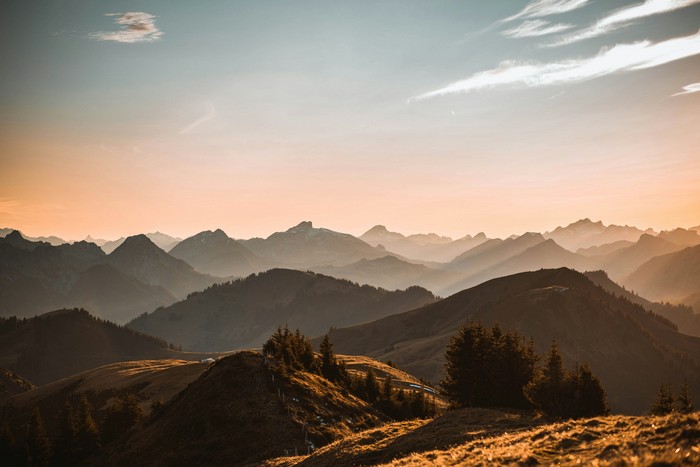Mountains are among the Earth’s most majestic natural formations, inspiring awe and wonder in people across the globe. But have you ever wondered how these colossal landforms came into existence? In this article, we’ll explore the most common types of mountains, diving into their formation processes, key features, and notable examples.
SEE ALSO: What is a Mountain Leader Job?
Definitions
What is a Mountain?
A mountain is a large natural elevation of the Earth’s surface rising abruptly from the surrounding level; typically, a mountain has a peak and steep sides. Mountains are formed through various geological processes, primarily involving tectonic forces that shape the Earth’s crust.
Different Categories of Mountains
Mountains can be categorized into several types based on their formation processes. The most common types include:
Fold Mountains
Fault-Block Mountains
Volcanic Mountains
Dome Mountains
Plateau Mountains
Common Mountain Types
Fold Mountains
Fold mountains are the most common type of mountain, formed when two tectonic plates collide. The immense pressure from this collision forces layers of the Earth’s crust to fold, buckle, and rise, creating mountain ranges. These mountains are characterized by their curved or folded layers of rock.
Examples:
The Himalayas: Formed by the collision of the Indian Plate and the Eurasian Plate, the Himalayas are the tallest mountain range in the world, home to Mount Everest.
The Alps: Located in Europe, the Alps were formed by the collision of the African and Eurasian plates, creating a stunning landscape of jagged peaks and deep valleys.
Fault-Block Mountains
Fault-block mountains form when large blocks of the Earth’s crust are tilted, lifted, or dropped along fault lines. This process, known as faulting, occurs when tectonic forces stretch and crack the crust, causing large sections to break and move. These mountains often have steep, straight sides and flat tops.
Examples:
Sierra Nevada: Located in the western United States, the Sierra Nevada range is a prime example of fault-block mountains, characterized by its high, rugged peaks and expansive valleys.
Basin and Range Province: Spanning the western United States, this region is known for its alternating series of fault-block mountain ranges and valleys, created by extensive crustal stretching.
Volcanic Mountains
Volcanic mountains form when molten rock, or magma, erupts through the Earth’s crust and accumulates on the surface. Over time, repeated eruptions build up layers of lava and ash, creating a conical mountain. These mountains are often found at tectonic plate boundaries or hotspots.
Examples:
Mount Fuji: Japan’s iconic peak, Mount Fuji, is a stratovolcano, formed by layers of lava and ash from repeated eruptions.
Mount Kilimanjaro: Located in Tanzania, Kilimanjaro is Africa’s highest peak and a prime example of a volcanic mountain, formed from multiple volcanic eruptions.
Dome Mountains
Dome mountains form when magma pushes up from beneath the Earth’s crust but does not erupt onto the surface. Instead, the magma creates a bulge or dome, which can eventually erode to expose the underlying rock layers. Dome mountains are usually isolated and rounded in shape.
Examples:
The Black Hills: Located in South Dakota, the Black Hills are a series of dome mountains, formed by the uplift of granite and other rocks.
Plateau Mountains
Plateau mountains, also known as dissected plateaus, are formed by the uplift of large, flat regions of the Earth’s crust. Over time, rivers and other erosional forces carve deep valleys and canyons into the plateau, leaving behind high ridges that resemble mountains.
Examples:
Colorado Plateau: Spanning four U.S. states, the Colorado Plateau is a vast region of uplifted land, characterized by its high mesas, deep canyons, and rugged terrain.
Key Features
Fold Mountains: Recognizable by their folded rock layers, high peaks, and often deep valleys. These mountains are typically found at convergent plate boundaries.
Fault-Block Mountains: Characterized by steep, straight sides and flat tops, these mountains are the result of crustal stretching and faulting.
Volcanic Mountains: Known for their conical shapes, these mountains are built from layers of lava and ash. They often have craters at their summits.
Dome Mountains: Typically isolated and rounded, dome mountains are formed by the uplift of rock layers due to magma pushing from below.
Plateau Mountains: Distinguished by their flat tops and deeply eroded valleys, plateau mountains are the result of uplift and subsequent erosion.
Comparison: While fold and fault-block mountains are primarily formed by tectonic forces, volcanic mountains are the result of volcanic activity. Dome mountains differ in that they are created by magma without an eruption, while plateau mountains are shaped by erosion after uplift.
Conclusion
Mountains are fascinating subjects for further exploration. To learn more about the role of mountains in ecosystems or to discover more about specific mountain ranges, consider exploring resources such as geological surveys, nature documentaries, and hiking guides. For those interested in outdoor activities, topics like mountain climbing and the best hiking trails around the world offer exciting avenues to explore.Whether you’re a geology enthusiast or an outdoor adventurer, understanding the different types of mountains enhances your appreciation of these magnificent natural formations.

